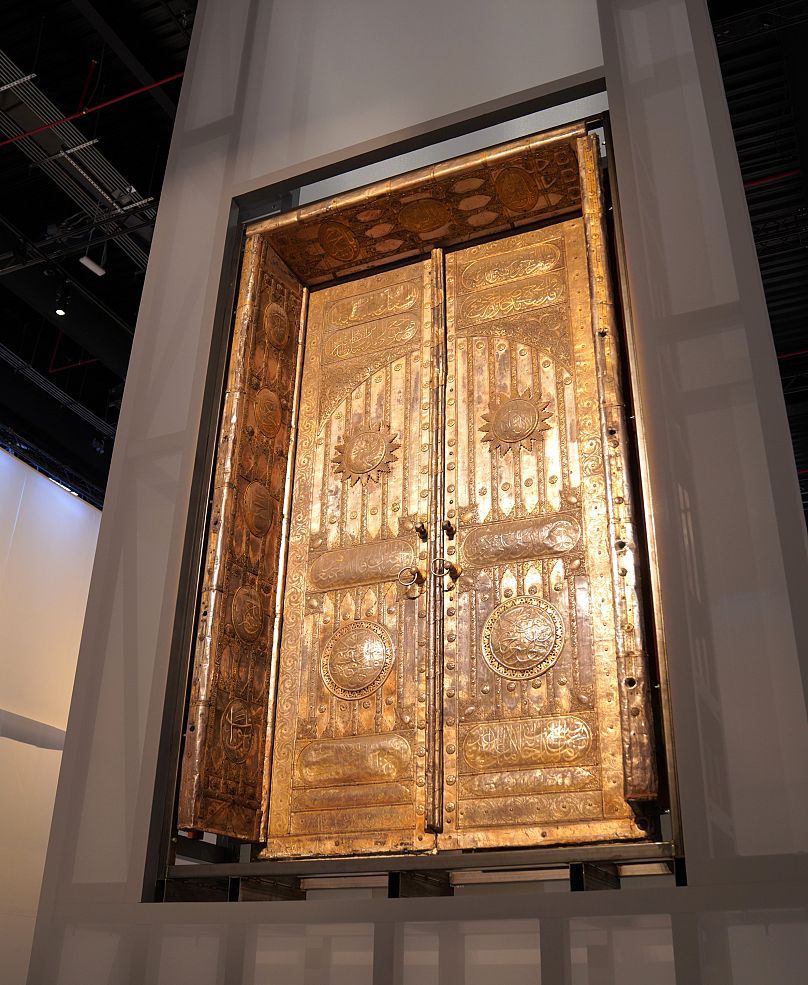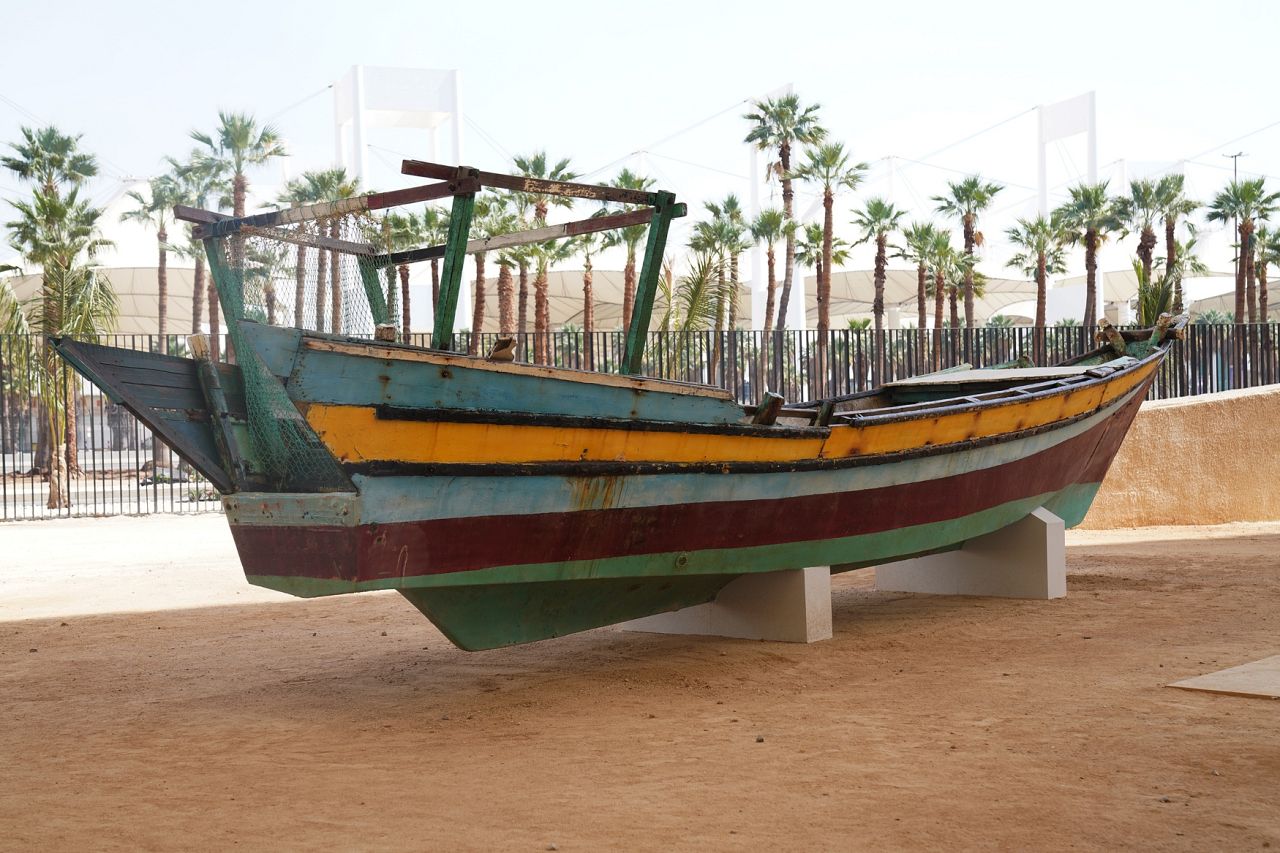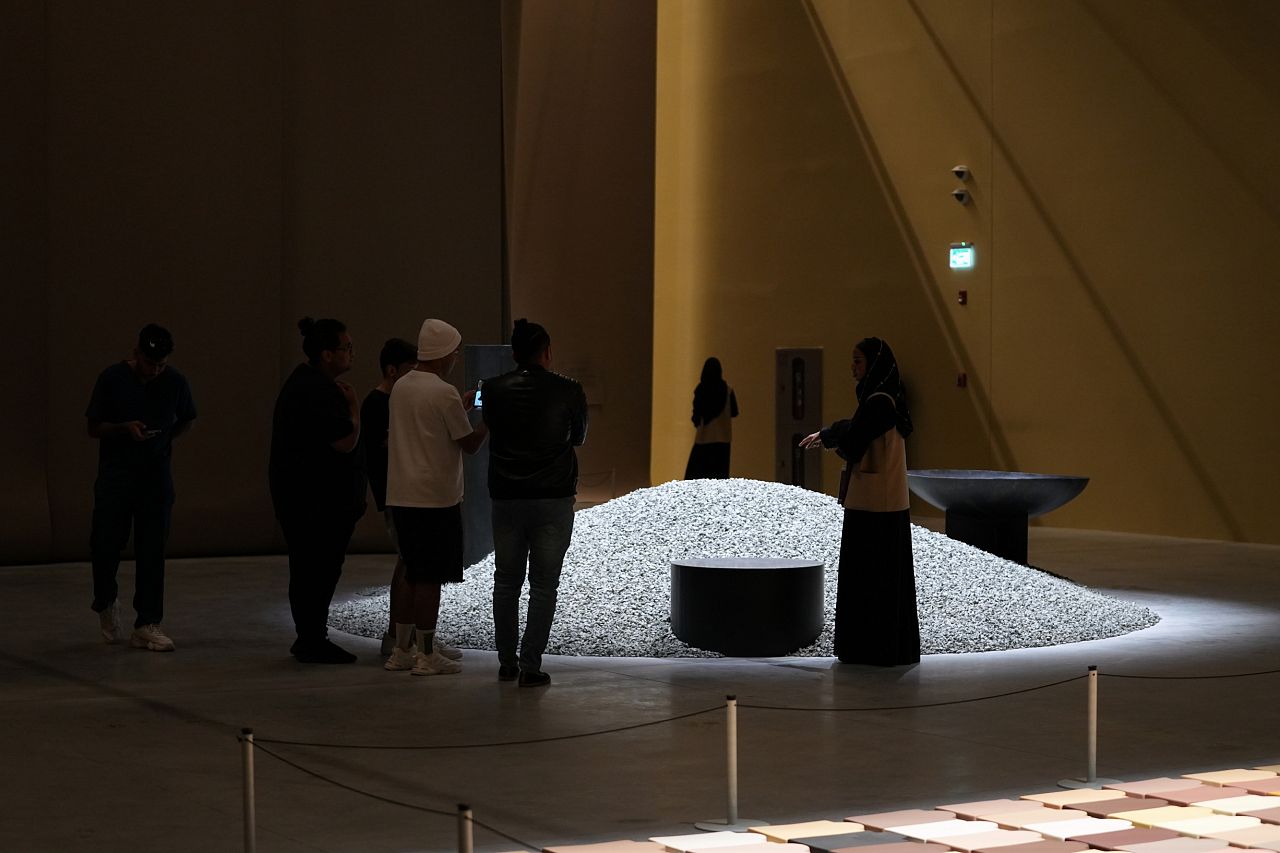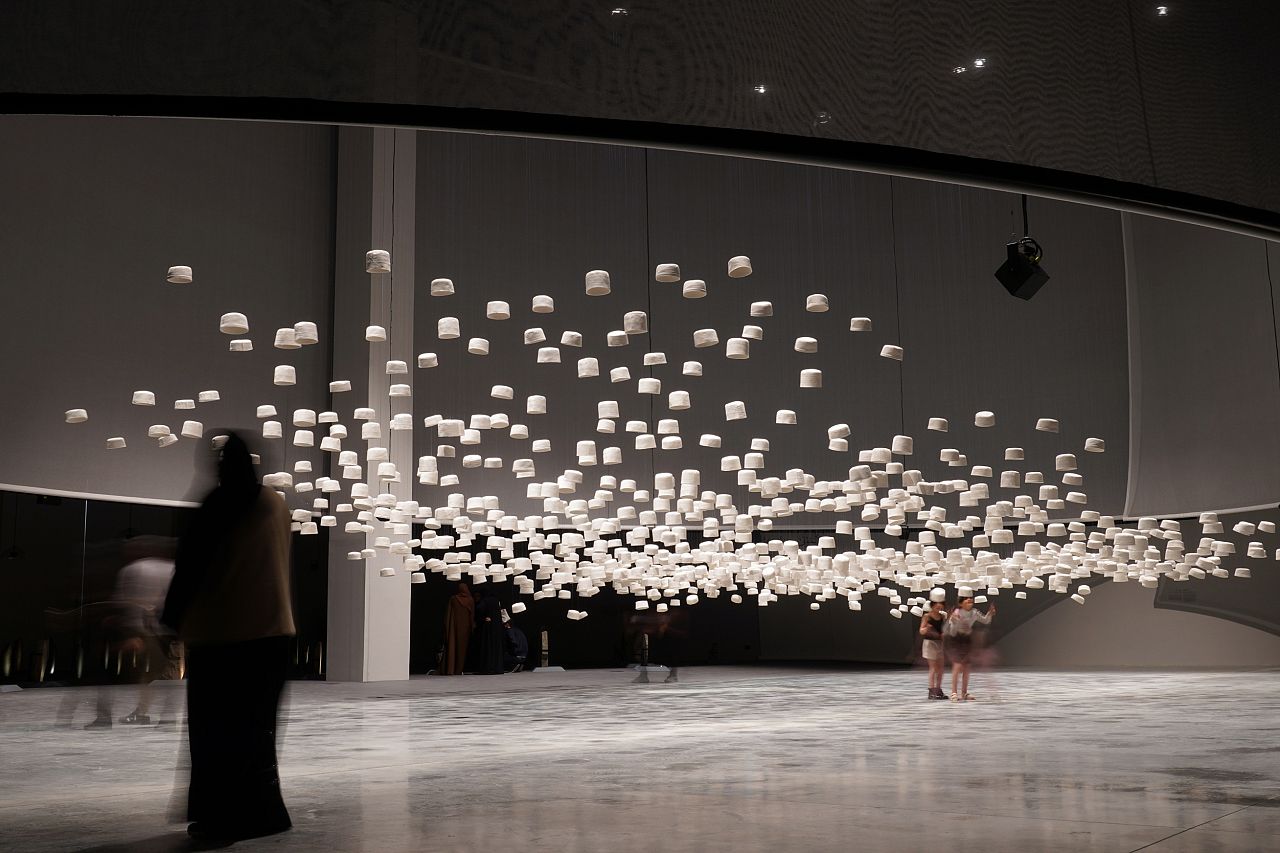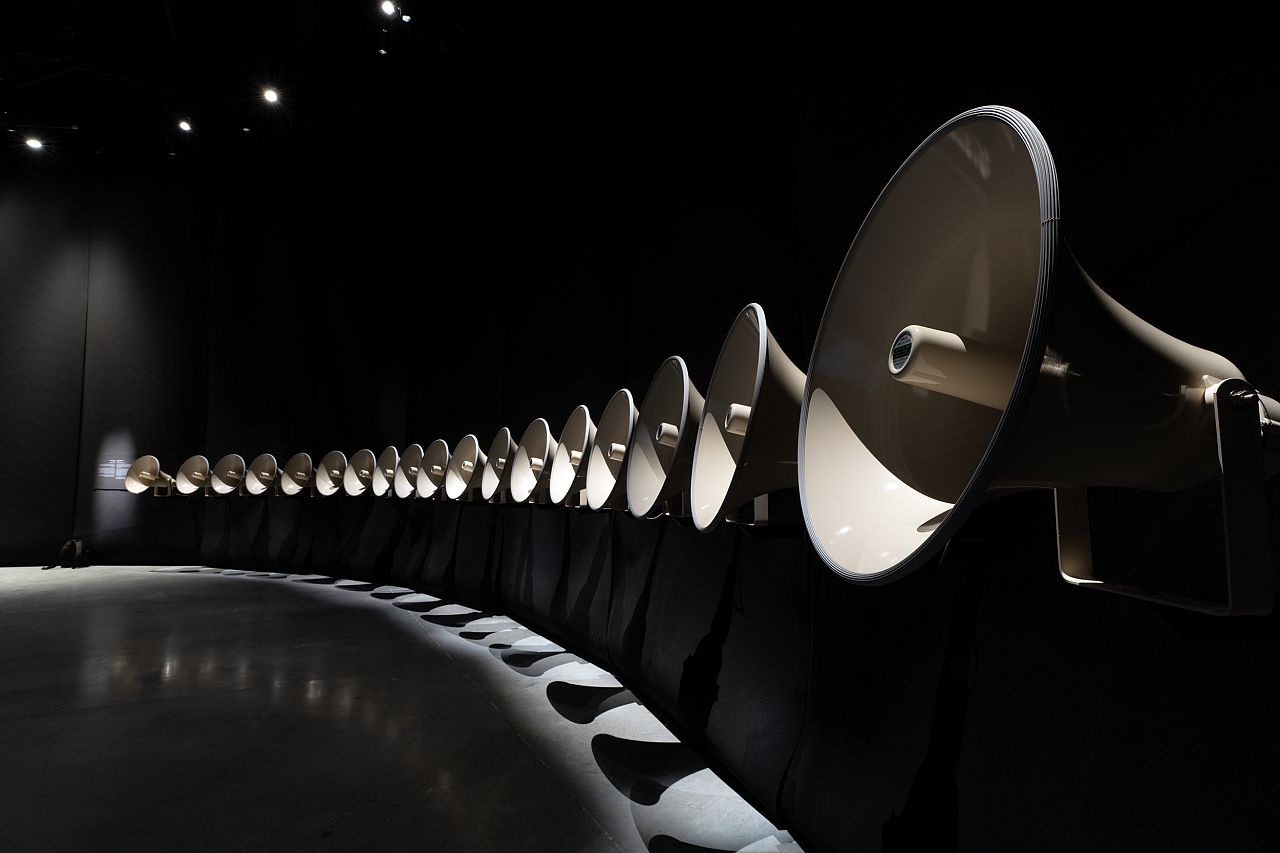Elise Morton recently returned from the world's first Islamic Art Biennale and discovered an exhibition divided into two experiences: Qiblah reflecting daily ritual of acts and faith, while Hijrah explores migration issues.
Pilgrims embarking on the Hajj – a sacred pilgrimage to Mecca, required of every Muslim at least once in their lifetime – will likely find themselves at some point at Jeddah airport’s gargantuan Hajj Terminal, awaiting the next step of their journey to Islam’s holiest city.
In 2023, the terminal has invited travellers on another journey: through the rituals that have defined Islam from its inception to the present day, and the footsteps of the Prophet Muhammad, at the first ever Islamic Arts Biennale.
“We were set a task to make something universal to the Muslim world but that also reflects the particularity of this place,” explains curator Dr Julian Raby. Pilgrims en route to Mecca gather from across the globe with one goal, to visit the Awwal Bait (literally meaning “First House”) or House of Allah: the Ka’bah in Mecca, which provides the focal point of daily rituals of worship. It is at once, says Raby, “the thing that unites all Muslims” no matter their location, and a holy site of which this region of Saudi Arabia, specifically, is the custodian.
It is under the title of Awwal Bait that the Biennale traces centuries of creativity, juxtaposing historical artefacts with contemporary works to explore the artistic heritage of Islam, with the Ka’bah its metaphorical guiding light.
Within this theme, the Biennale is split into two main exhibition experiences: Qiblah and Hijrah. Qiblah, meaning the direction of the Ka’bah toward which every Muslim faces in their daily prayers, is a series of galleries combining contemporary artworks and historical objects reflecting on daily ritual and acts of faith.
In itself, Qiblah is divided into six sections, taking audiences through key elements of Islamic ritual: Adhan: The Call; Wudu’: Purification; Salah: Prayer; Salat Al-Jama’ ah: Congregational Prayer; Mawt: Mortality; and Bait: House of God. Hijrah, which brings visitors out under the tent-like canopy of the Hajj Terminal, presents specially commissioned artworks that explore the theme of migration.
Outside under the canopy in the Hijrah exhibit, A Series of Personal Questions Addressed to a Boat That Sailed Its Last Journey on the Red Sea by James Webb sees the South African artist ask a salvaged traditional Arabian wooden boat questions that prompt meditation on what the boat embodies: migration, trade, pilgrimage, identity.
Islamic architectures and experiences
Artistic trio Beya Othmani, Ziad Jamaleddine and Iheb Guermazi present in their work Jerba a perspective-shifting take on holy space, crafting a deconstructed mosque reduced to its essential elements – a mihrab (a niche in the wall that indicates the direction of Mecca), ablution bowl and stool – amidst a pile of gravel that echoes the topography of the Tunisian island of Djerba.
If these works draw specifically on sacred spaces and sound in an Islamic context, Muhannad Shono’s On Softer Light provides space for a broader reflection on the spiritual realm. The two-part installation of light, shone through almost painfully fine threads, creates an ethereal realm where the lines are blurred between light and dark, the physical and the spiritual.
Taking on broader themes of injustice, Haroon Gunn-Salie’s Amongst Men reflects particularly on the role of Islam in resistance to colonialism and apartheid.
A thousand individually cast kufi caps – traditional hats worn by Muslim men across Africa and South Asia – hang hauntingly at varied heights to recreate the funeral of South African imam and apartheid critic Abdullah Haron, which drew 40,000 mourners.
Unknown Treasures
Amidst these contemporary works – and within two special pavilions housing artefacts from the cities of Mecca and Medina – are what Raby describes as “unknown treasures of the Kingdom.” These historical treasures range from ornate pieces of kiswa (the intricately embroidered piece of cloth that covers the Ka’bah) from the King Abdulaziz Center for World Culture, also known as Ithra, to pages from late-9th-century Qur'an from the Saudi National Museum and a bounty of archival photographs.
A special showcase welcomes objects lent from the collections of museums around the world, including the Benaki Museum in Athens and the State Museum of Arts of Uzbekistan.
It is not only the juxtaposition of the historical and contemporary, though, that creates a dialogue between the past and present. Visitors witness the intersection of the two in history-inspired artworks such as Sarah Al Abdali’s After Hijra, a sound and visual installation featuring a selection of historic tombstones from a Mecca cemetery, together with Joe Namy’s immersive sound installation Cosmic Breath.
This work is composed of 18 loudspeakers, each sounding a different recording of the Adhan (call to prayer) from a multitude of countries and moments in history, and including what is thought to be the earliest recording, from the Haram Mosque in Mecca in the late 1800s. Works such as these create a dialogue between the past and present, with the promise of a future in which ritual and heritage live on.
The audience’s journey in the footsteps of the Prophet Muhammad through the Biennale’s Hijrah, under the canopy of Hajj Terminal but metaphorically tracing the route from Mecca to Medina, finds its climax in the film In the Footsteps of the Beloved, which premiered at the Biennale in March.
The film, directed by American filmmaker Ovidio Salazar and complementing the exhibition Hijrah: In the Footsteps of the Prophet at Ithra, sees preeminent Hijrah scholar Dr. Abdallah Alkadi guide audiences through the real landscapes travelled by the Prophet.
His focus on archaeological, historical and scientific evidence – laid bare before viewers – is a captivating, refreshing shift from the traditional telling of the story. This “art house-style, meditative” film, as Ithra curator Idries Trevathan describes it, is much like the Biennale as a whole in its thought-provoking nature: it is at once about a specific event in a specific location and significant for a specific religious community, while offering food for thought on some of the world’s most salient issues – migration and identity, to name just two – for Muslim and non-Muslim audiences alike.
The Islamic Arts Biennale 2023 runs in Jeddah until 23 April 2023.












